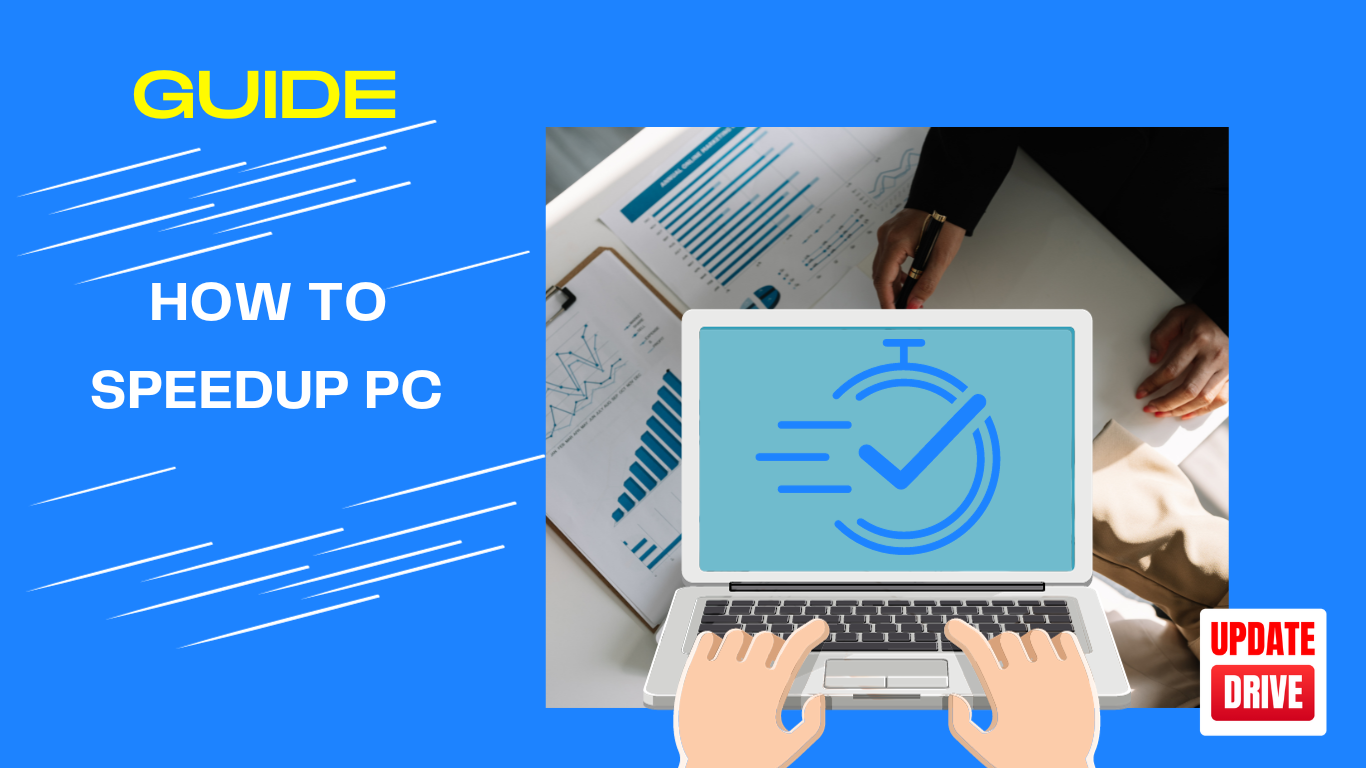Step by Step guide on how to increase computer speed
Close unnecessary programs
Close any programs or processes running in the background that are not needed. This will free up system resources and improve processing speed.
Closing unnecessary programs on a PC can help free up system resources and improve overall performance. Here's a step-by-step guide:
Identify running programs
Press Ctrl + Shift + Esc on your keyboard to open the Task Manager. Alternatively, you can right-click the taskbar and select “Task Manager” from the menu.
Sort by CPU and Memory usage
In the Task Manager, click on the “Processes” or “Details” tab (depending on your Windows version). Click on the “CPU” or “Memory” column to sort the programs in descending order based on resource usage.
Identify unnecessary programs
Look for programs that consume a significant amount of CPU or memory resources you don't need. Examples may include web browsers with multiple tabs, media players, or software running in the background.
Close programs
Right-click on the program you want to close and select “End task” or “End process” from the context menu. Alternatively, you can select the program and click on the “End task” button at the bottom-right corner of the Task Manager window.
Confirm closing
A warning message may appear asking if you want to end the task. If you are sure, click “End process” or “End task” to close the program. Be cautious not to close any essential system processes.
Repeat if necessary
Repeat steps 4 and 5 for each unnecessary program you want to close.
Check for changes: Monitor your PC's performance to see if closing these programs has made any noticeable improvements. If needed, consider closing additional programs to free up more resources.
Remember, it's important not to close any critical system processes or programs you actively use.
Remove unnecessary startup programs.
Disable any unneeded startup programs from starting up automatically when your computer boots up. This can be done through the Task Manager or System Configuration tool.
To remove unnecessary startup programs, you can follow these step-by-step instructions:
Open the Task Manager
- Right-click on the taskbar at the bottom of your screen.
- From the context menu that appears, select “Task Manager.”
- Alternatively, you can press Ctrl + Shift + Esc keys together to open the Task Manager directly.
Navigate to the Startup Tab
- In the Task Manager window, find and click on the “Startup” tab.
Identify and Disable Unnecessary Programs
- Look through the list of startup programs and identify those you want to disable.
- Keep in mind that not all programs listed here are necessary for your computer's startup and operation.
- To disable a program, right-click on it and select “Disable”.
- Repeat this process for all unnecessary programs you want to disable.
Restart your computer
- Once you have disabled the unnecessary startup programs, close the Task Manager.
- Restart your computer for the changes to take effect.
After these steps, the unnecessary startup programs will no longer launch automatically when you start your computer, which may help improve its speed and performance.
Clean up your hard drive.
First, check an delete any unnecessary files, old programs, or temporary files from your computer. This can be done by using the built-in Disk Cleanup tool or third-party software.
Update your operating system.
Keep your operating system always up to date with the latest patches and updates. This can help improve system speed performance and fix any bugs or issues affecting processing speed.
Increase RAM
Consider upgrading your computer's RAM (Random Access Memory) if possible. Having more RAM can significantly improve processing speed, allowing your computer to handle more tasks simultaneously.
Upgrade to an SSD
If your computer still uses a traditional hard drive, consider upgrading to a solid-state drive (SSD). SSDs are faster and more reliable compared to HDDs, which can improve processing speed and overall system performance.
Disable visual effects
Adjusting your computer's visual settings to reduce the use of animations, shadows, and other effects can improve processing speed. This can be done through the Control Panel or by right-clicking on the desktop and accessing the “Personalize” settings.
Scan for malware
Run a full system scan using reliable antivirus software that can detect and remove any harmful malware or viruses that could be slowing down your computer.
Update device drivers
Ensure that all your device drivers are current. Outdated or faulty drivers can negatively impact processing speed. You can update drivers manually or use driver update software.
Defragment your hard drive.
Run the built-in Disk Defragmenter tool to optimize the arrangement of files on your hard drive. This can help improve processing speed by reducing the time it takes to access data.
Limit startup programs
Minimize the number of programs automatically starting when your computer boots up. This can be done by accessing the Startup tab in the Task Manager or using third-party software.
Upgrade your hardware
If your computer is still struggling with processing speed, consider upgrading its hardware components such as the processor (CPU) or graphics card. This can provide a quick boost in performance.
Clear browser cache
If you notice that your internet browsing is slow, clearing your browser's cache can help improve processing speed. This can be done through the browser's settings or preferences.
Keep your computer cool.
Overheating can cause performance issues. Ensure that your computer temperature is adequately cooled by cleaning the dust from cooling fans, using a laptop cooling pad, or ensuring proper ventilation.
Reinstall the operating system.
As a last resort, you may consider reinstalling the operating system. Starting fresh eliminates any software or system issues causing slow processing speed. Make sure to back up your important data before reinstalling the OS.
Remember, some of these steps may require technical knowledge or assistance. If you're not comfortable performing any of these steps, it's advisable to seek help from a professional.

